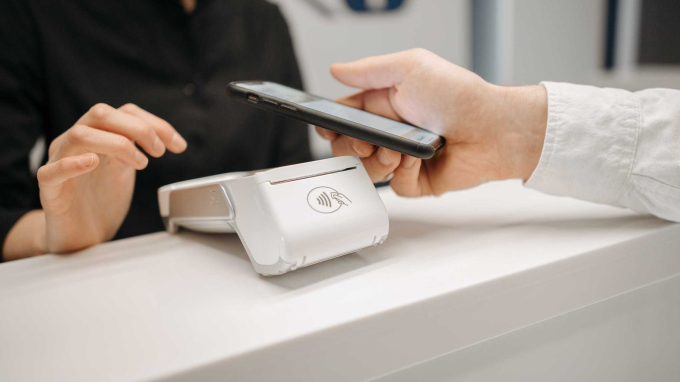In a world where we have amazing technology at our fingertips, NFC is another innovation to marvel at. But what is NFC, is it the same as Bluetooth, and how does this technology make our lives easier as business owners? Find out more in our NFC guide.
What is NFC?
NFC, or Near Field Communication, is the basis on which contactless payment technology works. Essentially, NFC is a way of transmitting data through radio waves over a very short distance, which helps protect the security of card payments.
NFC was first patented back in 1983, but there were years of development from companies like Sony and Philips until contactless payments were introduced in 2007. By 2011 , NFC technology was being used in smartphones for taking mobile payments. Today, your card-carrying customers make NFC transactions every day with one tap of a card, mobile or other device like a smartwatch.
How does NFC work?
NFC devices such as payment cards, mobile phones and card machines are equipped with NFC chips, which allow data to be transmitted at just a few centimetres’ distance.
These transfers of data happen through radio waves using RFID (radio-frequency identification), a technology where tags or labels can receive data through a circuit and antenna – similar to how barcode technology works. It’s not the same as Bluetooth – more on that later – as NFC requires close proximity, which means they are built for facilitating secure payments.
Is NFC secure?
NFC is considered safe when compared to previous payment solutions like magnetic-stripe cards, where a cardholder’s data was stored on the card ‘stripe’ and could easily be replicated. With NFC, the chip itself can help prevent fraud as it has a cardholder’s unique digital signature, while the short-range nature of NFC technology adds a further layer of security. Also, NFC phone payments are more secure thanks to their complicated authorisation, such as fingerprint or passcode payments.
NFC versus Bluetooth
Both NFC and Bluetooth are wireless technologies that make our lives easier, but that’s where the comparisons end. NFC uses less power than Bluetooth, and only works at a range of centimetres – hence ‘Near Field’ Communication – which makes it less susceptible to interference.
Bluetooth, by comparison, has a range of around ten metres, and can connect to multiple devices at a time – like laptops, speakers and smartphones. Bluetooth requires a pairing process between two or more devices, one of which is the ‘master’. NFC and Bluetooth can complement each other in everyday life, but as it’s less secure, don’t expect Bluetooth bank card cards to appear any time soon.
What’s the difference between EMV and NFC?
There are lots of abbreviations to unpick when it comes to card payments. EMV refers to Europay, MasterCard and VISA, who founded the modern payment card chip in 1994. So, if you come across the term ‘EMV cards’, it simply refers to the ubiquitous pieces of plastic we all carry around in our wallets. With EMV Chip and PIN payments, you have to insert a physical card into a reader, whereas with NFC, you just tap and go.
Should NFC be on or off?
If you have an NFC-enabled phone or smartwatch, whether you have NFC switched on or off depends on if you plan to use the device for making contactless payments or not. You should be able to turn NFC on and off in your Settings menu (if your device allows this). If you experience any unusual behaviour on your device, you can always report this to the manufacturer or your bank.
You can read more about your privacy and security on our website. For more articles and guides on running a business, here’s some food for thought over at Tyl Talks:
- What is PCI compliance?
- Protecting your ecommerce business from fraud
- What does pre-authorisation mean?
Disclaimer
This has been prepared by Tyl by NatWest for informational purposes only and should not be treated as advice or a recommendation. There may be other considerations relevant to you and your business so you should undertake your own independent research.
Tyl by NatWest makes no representation, warranty, undertaking or assurance (express or implied) with respect to the adequacy, accuracy, completeness, or reasonableness of the information provided.
Tyl by NatWest accepts no liability for any direct, indirect, or consequential losses (in contract, tort or otherwise) arising from the use of the information contained herein. However, this shall not restrict, exclude, or limit any duty or liability to any person under any applicable laws or regulations of any jurisdiction which may not be lawfully disclaimed.
